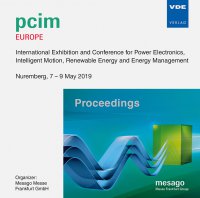Design of State-Feedback Controller for a Single-Phase Grid- Connected Siwakoti-H Inverter with LCL filter
Conference: PCIM Europe 2019 - International Exhibition and Conference for Power Electronics, Intelligent Motion, Renewable Energy and Energy Management
05/07/2019 - 05/09/2019 at Nürnberg, Deutschland
Proceedings: PCIM Europe 2019
Pages: 8Language: englishTyp: PDF
Personal VDE Members are entitled to a 10% discount on this title
Authors:
Begh, Mirza Abdul Waris (Technical University of Munich, Germany & Tampere University, Finland)
Liegmann, Eyke; Abdelrahem, Mohamed; Kennel, Ralph (Technical University of Munich, Germany)
Mahajan, Akshay; Palanisamy, Aswin (Fraunhofer Institute for Solar Energy Systems, Germany)
Siwakoti, Yam P. (University of Technology Sydney, Australia)
Karamanakos, Petros (Tampere University, Finland)
Abstract:
Grid-tied transformerless inverters for photovoltaic (PV) systems have attained a prominent share in the distributed power generation applications on both the domestic and utility scale. This arises the need of a transformerless inverter with less hardware components and complexity. This paper presents a state-feedback current controller (SFCC) for a flying-capacitor based transformerless inverter (Siwakoti-H topology). Compared to the conventional proportional-integral (PI) based control, the state-feedback current control provides a better dynamic performance for a single-phase grid-tied converter equipped with an LCL filter. The controller is designed using pole placement to set the dominant behavior of the converter, which actively damps the resonant frequency of the LCL filter. The controller is extended using dc voltage feedforward compensation (DVFC) to maintain the voltage ripple of the flying capacitor within the limits, and an integral state for improved disturbance rejection. Simulation results illustrate the steady-state and dynamic performance of the controller as well as the inherent damping of the LCL filter resonance. Experimental results are presented to verify the steady-state operation of the system.


